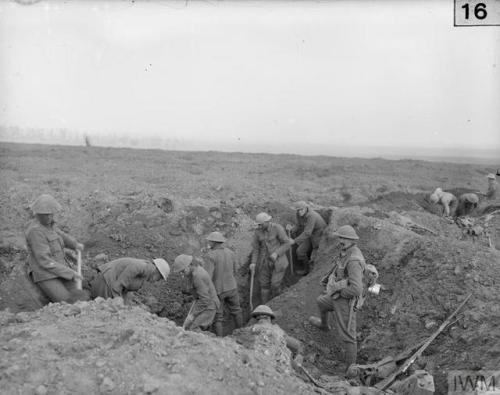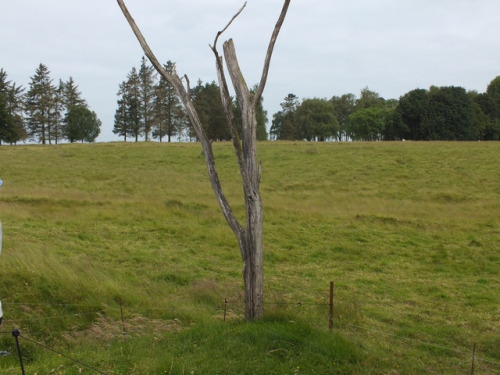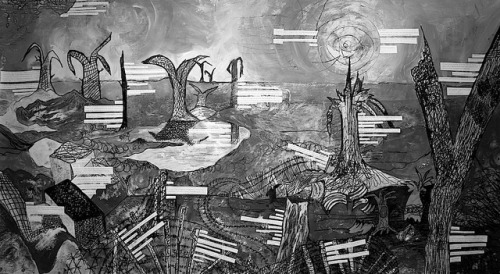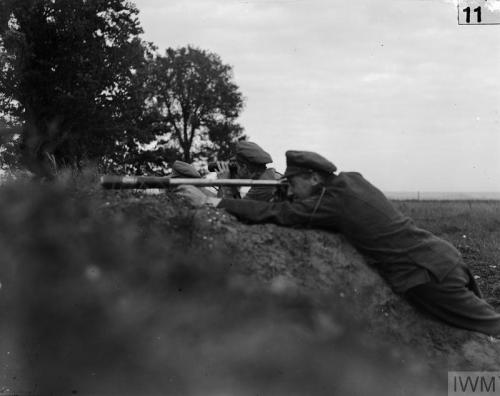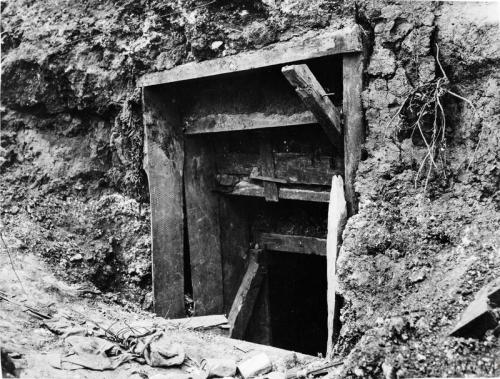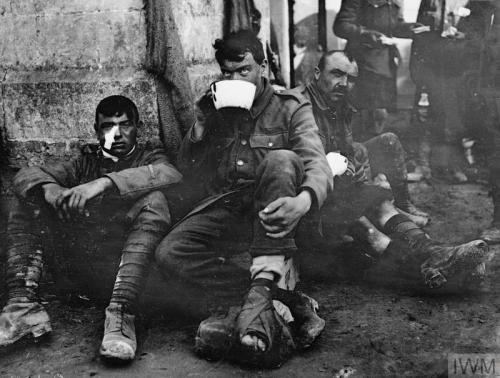#battle of the somme
© IWM (Q 193) Battle of Flers-Courcelette, during the Somme. New Zealanders making a trench by joining up shell craters, near Martinpuich, 15th September 1916.
Post link
Canadian soldiers in a reserve trench, during the battle of the Somme, watch shrapnel bursts above them.
Original image source: Library and Archives Canada
Post link
Meet the bird that captured the heart of this Canadian soldier… and maybe some of his things.
The four photographs below show a jackdaw who was found sometime during the Battle of the Somme. It became the mascot of this Canadian Army Service Corp despite the fact that he was a bit of thief and “continually stealing” from them. The pictures below were taken in March, 1917.
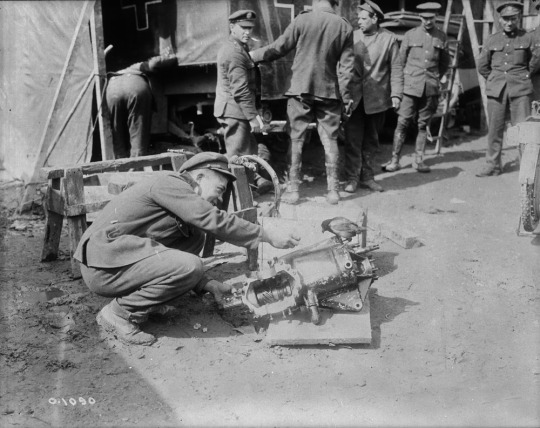



Photographs:1,2,3,4 from the Canadian Library and Archives.
Looking for more photographs of animals at war? Check out the Atlantic’sphoto series on the very topic.
Taking a break from colourizing, GWIC Takes Five is a feature which brings to you primary source material from the First World War. Whether it be postcards, posters, or letters. To see more, track the tag GWIC Takes Five.
“Battle of Pozieres Ridge. Troops of the 1st Australian Division (1st ANZAC Corps), some wearing German helmets, photographed between La Boisselle and Pozieres on their return from the taking of Pozieres, 23 July 1916.” By John Warwick Brooke.
Source: Imperial War Museum.
Post link
“Battle of Albert. British troops attacking German trenches near Mametz. 1st July 1916.”
Source: Imperial War Museum.
Post link
The following extract was handed to me by Dave Chapman (Research and Volunteer Co-ordinator at the museum) via Richard Coomber. It vividly details the horrific nature of the Battle of Arras and the significance of the bagpipes during one particular moment of conflict:

Private Walter Teale, of 19 Fletton Terrace, Undercliffe, has been through some heavy engagements at the front with the famous Cameron Highlanders. He was wounded in the Somme battle on the 17th of last August, being injured in the fingers and shoulders.
After a spell in Nottingham Hospital he re-joined his regiment and took part in the great Arras battle and was wounded again on the Bapaume Road, on March 3rd. This time he was sent to the hospital at Clacton-on-Sea and having now recovered, he went to the front for the third time last Tuesday.
Speaking of the Arras battle he says:
“We did about an 18 mile march during the night and opened the ball in a new place at 5 a.m. For five days a torrent of shell fire had been raging at this spot and the ground was ripped and torn and furrowed with the Huns’ big guns, and the air was sulphurous almost to the point of suffocation. When the order was given for our men to go over the top, we did so with right goodwill.
After mounting the parapet we advanced steadily across the shell-swept zone, picking our way between the shell craters and eventually lined up on the slope of the enemy’s parapet before taking part in the last grim struggle. We could see the Germans taking aim at us from behind their defences and then the Highland pipers struck up the Cameron march, which sent an exultant thrill through all our men. I believe it was the music at that moment which made it possible for us to go through the terrible ordeal that followed.
Anyhow, we dashed for the Huns, over the wires, over shell holes, past mined patches and death traps, and faced a torrent of fire aimed at us. At the top of the parapet men gripped each other in deadly embrace. Dead and wounded fell, some sticking on the barbed wire and others rolling down the slope.
The Germans spared neither men nor munitions in their desperate efforts to throw us back. As far as we could see, they were lined along the front, shoulder-to-shoulder, and behind them was another line of reserves ready to be moved up to fill vacancies in the first. Further back still was another line ready to relieve the others when the strain became too great. Of course, we had no such luck as a double-line of reserves. After a desperate struggle we smashed through their first line, though they tried hard to close up the gap we had made by sending forward more men. With us it was a question of holding on or dying where we were. The Germans were furious at our success and hurled their best troops against the Highlanders but we were immoveable and victory remained with us at the end.”
Shipley Express & Times 1 June 1917, page 9

Further background info related to Arras: http://www.bbc.co.uk/news/uk-scotland-39500498
‘Arras was fought from 9 April to 16 May 1917 and marked the beginning of the spring offensive on the Western Front.’
Image 1: Beaumont Hamel - Battle of the Somme. This image was provided by Dave Chapman, Research and Volunteer Coordinator at the museum in response to our battlefield mural below it. He took this photograph on a battlefield tour and went on the tell me that the tree was used by both sides as a reference point for target indications during WW1.
Image 2: Battlefield mural created by Ardesier Primary School children as part of my Artist Residency
Post link
Battle of Albert. Artillery observers watching the bombardment of Pozieres from Observation Post near Aveluy, 10th July 1916.
Post link
Men of the 9th Hodson’s Horse, Indian Army charging directly towards the camera and armed with lances during training near Querrieu. 1916
Post link
Entrance to a German Officer’s dugout showing the protection over its doorway and its depth. 1916
Post link
Battle of Bazentin Ridge. Dressing the wounds of a German prisoner near Bernafay Wood, 19th July 1916.
Post link
Three wounded British soldiers, one drinking from a bowl, in a dressing station in a churchyard at Morlancourt, near Albert. 1916
Post link
Battle of Albert: Bringing in a wounded man of the 29th Division after the assault at Beaumont-Hamel on the Somme, 1 July 1916.
Post link
Soldiers of the Gordon Highlanders putting on rubber thigh boots, Bazentin-le-Petit, November 1916.
Post link
Battle of Albert. Loading 15-inch howitzer shells on to a special transport wagon. 1st July 1916.
Post link

